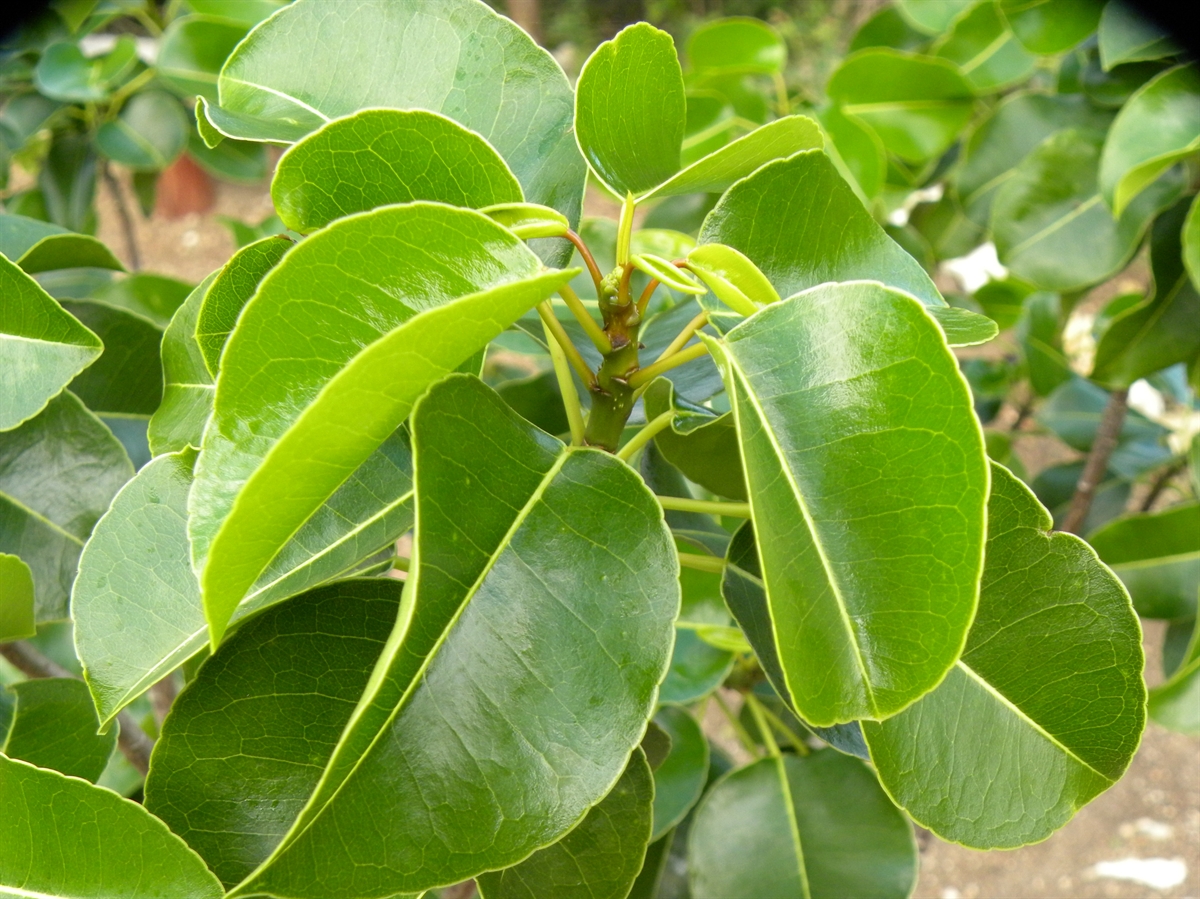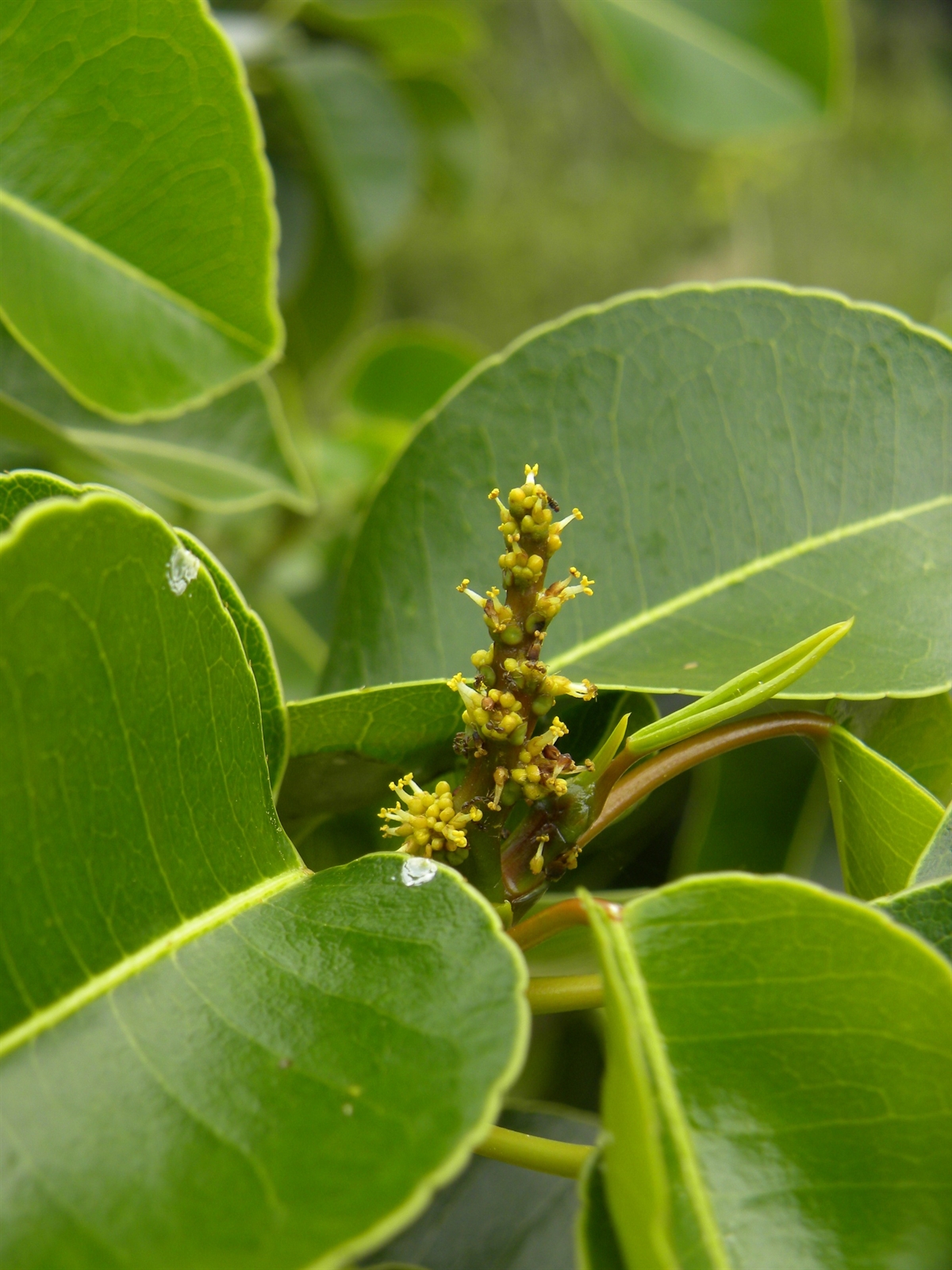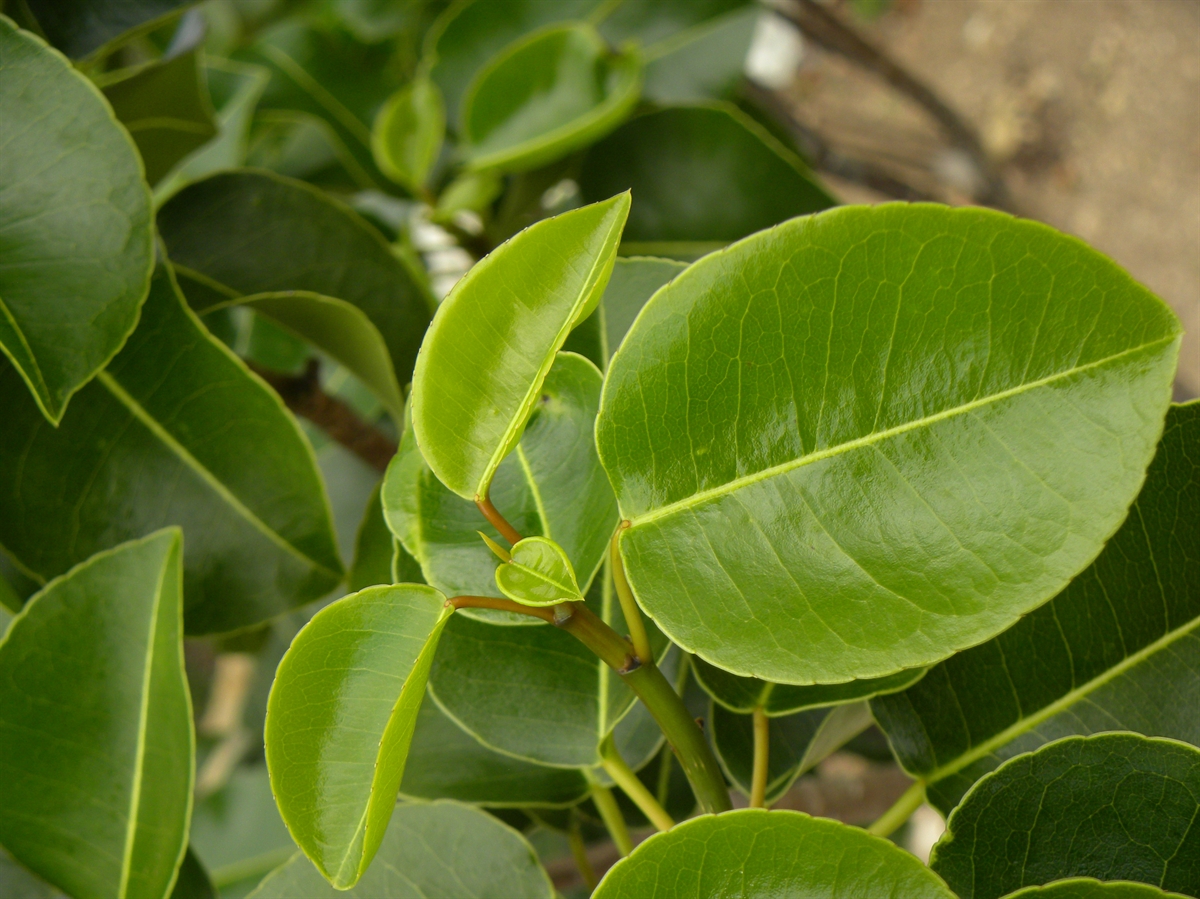Habit: Hippomane mancinella grows as a tree to 20 meters in height with a trunk to 50 cm. The leaves are arranged alternately, to 12 cm in length, oval – suborbicular with an acute to apiculate apex and a crenate/serrulate leaf margin. On the petiole at the base of the lamina is a circular gland. There is a pair of stipules at node. The leaves and stemsproduce a milky latex.
Hippomane mancinella is monoecious. The incomplete, imperfect, actinomorphic flowers are arranged in terminal spikes. The staminate flowers occur above the carpellate flowers on the rachis. Below each group of flowers is a large bract.
The staminate flowers occur in groups of 8-15 and are subtended by 2 glands. They have a highly reduced calyx (1 bract with 2-3 lobes) and no corolla. There are 2 stamens and no carpels.
The 1 or 2 carpellate flowers occur at the base of the spike. There is a calyx with 3 sepal lobes and no corolla or stamens. There is a single superior carpel with 4 or more locules and numerous seeds. Surrounding the carpellate flowers are glands and often-additional staminate flowers. The fruit is a berry containing flattened seeds.
Habitat: Hippomane mancinella grows near coastlines in Dry Broadleaf Evergreen Formation – Shrublands (scrubland coppice) or behind Dunes.
Distribution: Hippomane mancinella occurs on all island groups within the Lucayan Archipelago, Florida, the entire Caribbean region as well as Mexico south to South America.
Medicinal/Cultural/Economic usage: Hippomane mancinella is not known to be used medicinally in the Lucayan Archipelago. Elsewhere in the Caribbean it has been used to treat ulcers (although some say it can cause them) and used as a poison for arrow tips.
If a tree is girdled and left to slowly die the toxins in the wood break down and it can be used for cabinetry.
DO NOT SIT UNDER THIS TREE!!!! Rainfall will cause the sap to come off and will cause EXTREME BLISTERING!!!!


